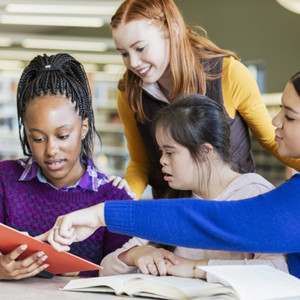Everything you need to know about IEPs
Teachers are likely to come across the terms accommodations and modifications if they have students with special needs in their classrooms. These terms are commonly found in Individualized Education Plans (IEPs) or 504 plans and refer to adjustments to the curriculum and environment that can make learning accessible for students with disabilities. These changes help students participate more actively in classrooms. Teachers, as part of the IEP team, must have a clear understanding of these terms.
What are accommodations in the classroom?
Accommodations refer to changes to the educational program, procedures, and materials, without substantially altering standards (instructions), criteria, expectations (assessment,) and content (curriculum and materials). Implementation of these changes can help students to overcome specific challenges or barriers that hinder learning. One key point is that accommodations do not change the expectations placed on students. With accommodations, students are expected to acquire the same skills and learning as other students. Therefore, teachers can use the same grading system to grade the performance of students with disabilities.
Accommodations are typically made in four main areas:
Presentation Accommodations: This refers to changes than can help increase students’ access to information for the purpose of instruction and assessment. Here are a couple of examples of presentation accommodations in the classroom:
- A student with visual impairment can be given Braille textbooks, textbooks which have larger print size and font or audio-texts.
- Teachers can make instructions more accessible for students with hands-on learning, use of visual cues, and organizational tools.
Response Accommodations: Implementation of response alterations can enable students to demonstrate their understanding of content or learning with ease. Here are a couple of examples of responsive accommodations in the classroom:
- A student with difficulty with fine motor skills can submit a typed assignment instead of a written assignment.
- Students can use scribes, oral assessments, and assistive devices to express their learning.
Setting Accommodations: When changes are made to the classroom environment, they are known as setting accommodations. Here are a few examples of settings accommodations in the classroom:
- A student with hearing impairment can be allowed to sit directly in front of the teacher.
- Students with attention deficit disorder may sit far away from aisles, windows, and doors to reduce distractions.
- Teachers can create quiet spaces equipped with sensory items to help calm students with sensory sensitivities.
Schedule Accommodations: Timing and schedules can be altered to allow for all students to complete their work and transition to new activities. Here are some examples of schedule accommodations in the classroom:
- A student who is slower at processing information can be allowed extra time for writing tests.
- Students with autism can be given frequent breaks between activities.
What are modifications in the classroom?
Modifications are alterations made to academic programs, procedures and/or assessments and can alter the standards, criteria, expectations, levels, and content. These are suggested when students are unable to perform in accordance with the educational standards due to their disabilities. Unlike accommodations, modifications change the expectations placed on students. These learning goals and objectives are framed to account for individual students’ strengths and areas of weakness. When modifications are required, students are not expected to attain the same skills or learn the same content as prescribed by the general standards of education. For example, a student with a cognitive impairment may be required to complete only some assessments or expected to complete only part of the curriculum.
It is important to emphasize that equal access to education should be made possible for all students. It is crucial for teachers to understand the differences between accommodations and modifications to help students with disabilities participate and explore learning to their maximum potential.
Explore everything you need to know about IEPs with the online continuing education class IPEs: Documentation and Implementation for Teachers.
January 2021 Editor’s Note: This post was originally published in July 2015 and has been updated for accuracy and comprehensiveness.
 About the Author
About the Author
Ellen Paxton is a respected expert in education and best known as the Chief Learning Officer of Professional Learning Board. As a two-time National Board Certified Teacher, Ellen has successfully published and customized online professional development courses and Learning Management Systems for 20 years to help teachers meet their state continuing education renewal credit requirements. Through ProfessionalLearningBoard.com, RenewaTeachingLicense.com, and ConnectedPD.com, Ellen has established solutions and maintained partnerships with several accredited universities, higher education institutions, teachers’ unions and state Departments of Education while setting strategic direction that makes a difference and overseeing implementation of popular online PD for schools.

Comments are closed.